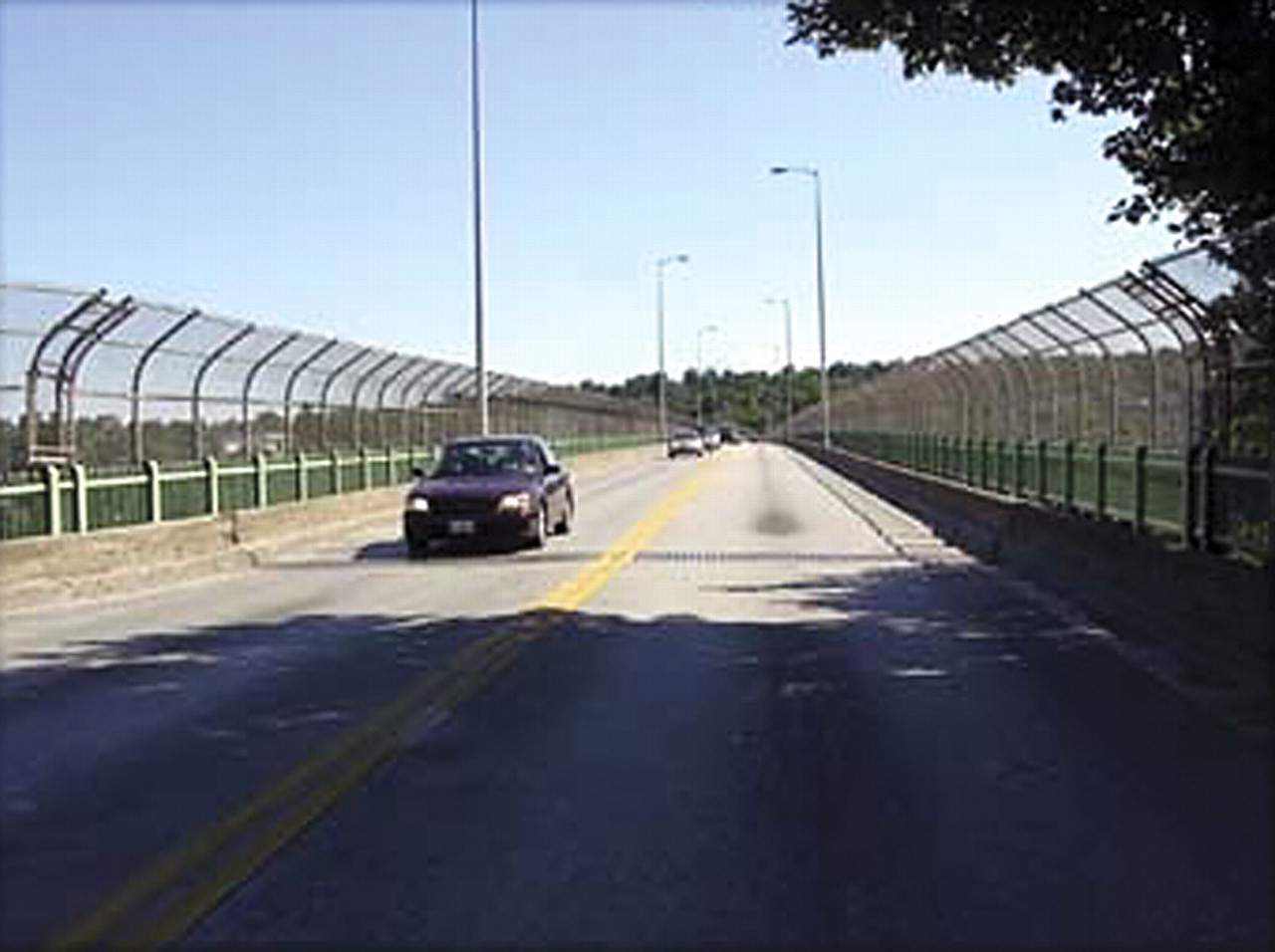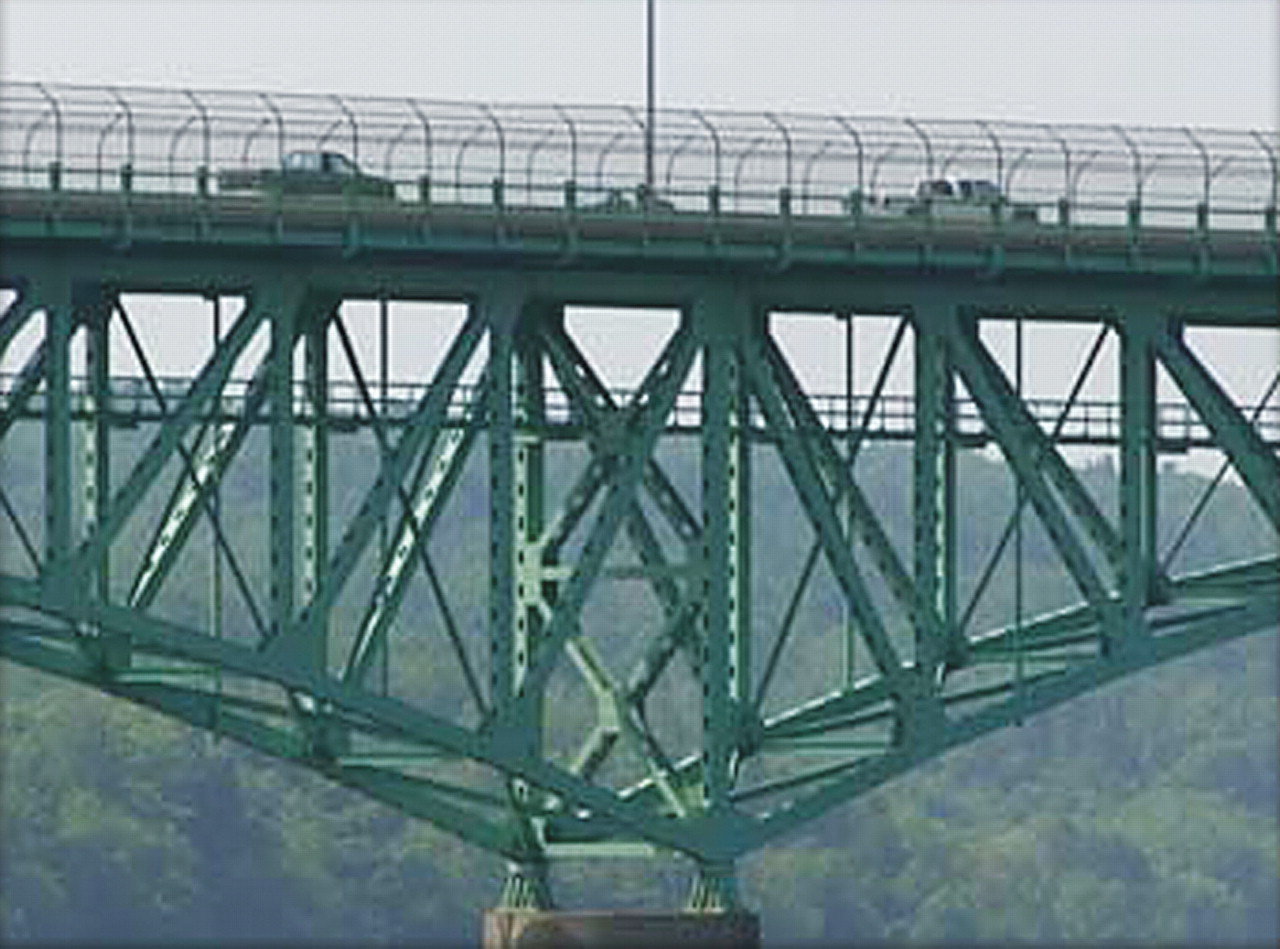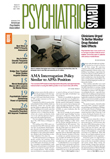Citizens in Augusta, Maine, have until next month to garner enough signatures to put replacement of a suicide barrier on the city's Memorial Bridge put to a citywide vote.
The city's eight-member city council voted in December 2005 and again in April of this year to rebuild the barrier—after it was taken down when the bridge was renovated—and the State Department of Transportation, which has jurisdiction over the bridge, has already agreed to reinstitute the barrier at no cost to the city.
But some citizens, including one city council member, want the question put to a citywide vote.
The 2,100 foot bridge spans the kennebec River, which bisects Maine's capital city, and has two lanes for traffic and a sidewalk for pedestrians on each side of the roadway; at its central point the bridge is approximately 100 feet above the water.
In 1983 an 11-foot-high fence was installed on each side of the bridge to prevent people from jumping from it, but it was removed last year when the bridge was closed for renovation.
City Appears Divided
With the reopening of the bridge to auto and pedestrian traffic, a movement has emerged to scrap the suicide barrier. The controversy pits public safety and protection of people with mental illness from impulsive suicide against concerns about aesthetics and what some in the city regard as defacement of a landmark.
“People hated that fence, but they didn't know they hated it until it came down,” city council member Donna Lerman, who voted against rebuilding the barrier, told Psychiatric News. “We didn't realize the negative impact of the fence on the city's mental wellbeing, but when it came down, people began to say, `This is really a beautiful town.' The bridge is the highest point from which to view the city. We had really lost touch with what was good about our city.”
Lerman said she also believes the suicide barrier diverts attention from the need for community-based services for people with mental illness in the city.
“We have a lot of people living in the community with inadequate support,” she noted. “The fence on the bridge is a way people can address that problem and feel that they have no further responsibility toward making sure that people have adequate support.”
She added that suicides occur in other ways—from gunshot wounds and drug overdoses—but that many of them are largely invisible to the public. “It's not so much suicide that people are concerned about as the visibility of people who jump from the bridge.”
Barrier Fulfilled Its Mission
But advocates of the barrier, including the Maine Association of Psychiatric Physicians (MAPP), point out that during the 22 years in which the barrier was in place, there were no suicides from Memorial Bridge. A study completed in March by Andrew Pelletier, M.D., a medical epidemiologist at the federal Centers for Disease Control and Prevention, found that from April 1, 1960, through July 31, 2005, 14 suicides from Memorial Bridge occurred, all of them prior to construction of the suicide barrier in 1983.
“Results of this study indicated that the safety fence installed in 1983 was effective in preventing further suicides from the Memorial Bridge,” Pelletier said. “The number of suicides related to jumping from other structures in Augusta remained unchanged following installation of the fence, suggesting that suicidal individuals did not seek alternative sites. The larger decline in the suicide rate for the city compared with the state further suggests that the fence was probably effective in lowering the overall suicide rate in Augusta.”
Lawrence Mutty, M.D., told Psychiatric News that patients with mental illness come from all over Maine to be treated at the 92-bed state psychiatric hospital and various outpatient mental health clinics on either side of—and in close proximity to—the Memorial Bridge. In addition to the state hospital on the east side of the bridge, there are two other busy inpatient psychiatric services, Maine General Medical Center and the vA Medical Center Togus.
“There is a pedestrian traffic across the bridge that is uniquely at risk,” said Mutty, a past president of MAPP and currently a councilor to its executive committee. He is also immediate past president of the Maine Medical Association.
He added that many of the state's medical leaders, including leaders of the Maine Medical Association, have supported reconstruction of the barrier.
The controversy over rebuilding the barrier echoes themes that surround debate about building a similar barrier on San Francisco's Golden Gate Bridge, which has for many years been a favored destination of those in the Bay area seeking to end their lives (Psychiatric News, April 1, 2005).
Psychiatrists with the Northern California Psychiatric Foundation have led a groundswell of support for erecting a barrier on the storied bridge in the face of public apprehension that such a barrier would deface one of the world's most extraordinary structures. Barrier design studies are under way.
In Toronto a similar debate occurred around construction of a barrier at the city's Bloor Street viaduct. In 2003, after nearly six years of discussion, a barrier was built that has dramatically reduced the number of suicides there.
In Augusta, comments from people on both sides of the issue seem to indicate that the barrier at Memorial Bridge was less than aesthetically appealing. Mutty said the state opted for the least-costly option, a chain-link cyclone fence that had rusted over the years.
City Manager William Bridgeo told Psychiatric News that the state Department of Transportation has already agreed to replace the barrier with a similar one, but that if the city wants something more aesthetically appealing, it will have to pay the additional costs. He said those costs would be approximately $250,000.
Bridgeo explained that in a council meeting last month, a group of citizens led by Lerman lodged a formal request for the question about the bridge barrier to be put before city voters in a referendum.
He said that under city law, if the citizens group can garner a number of signatures equal to 20 percent of the number of voters in the last gubernatorial election— or approximately 1,500 signatures—the question will be placed on the ballot. They have 60 days since last month's city council meeting to do so, or until the first week in August. ▪


